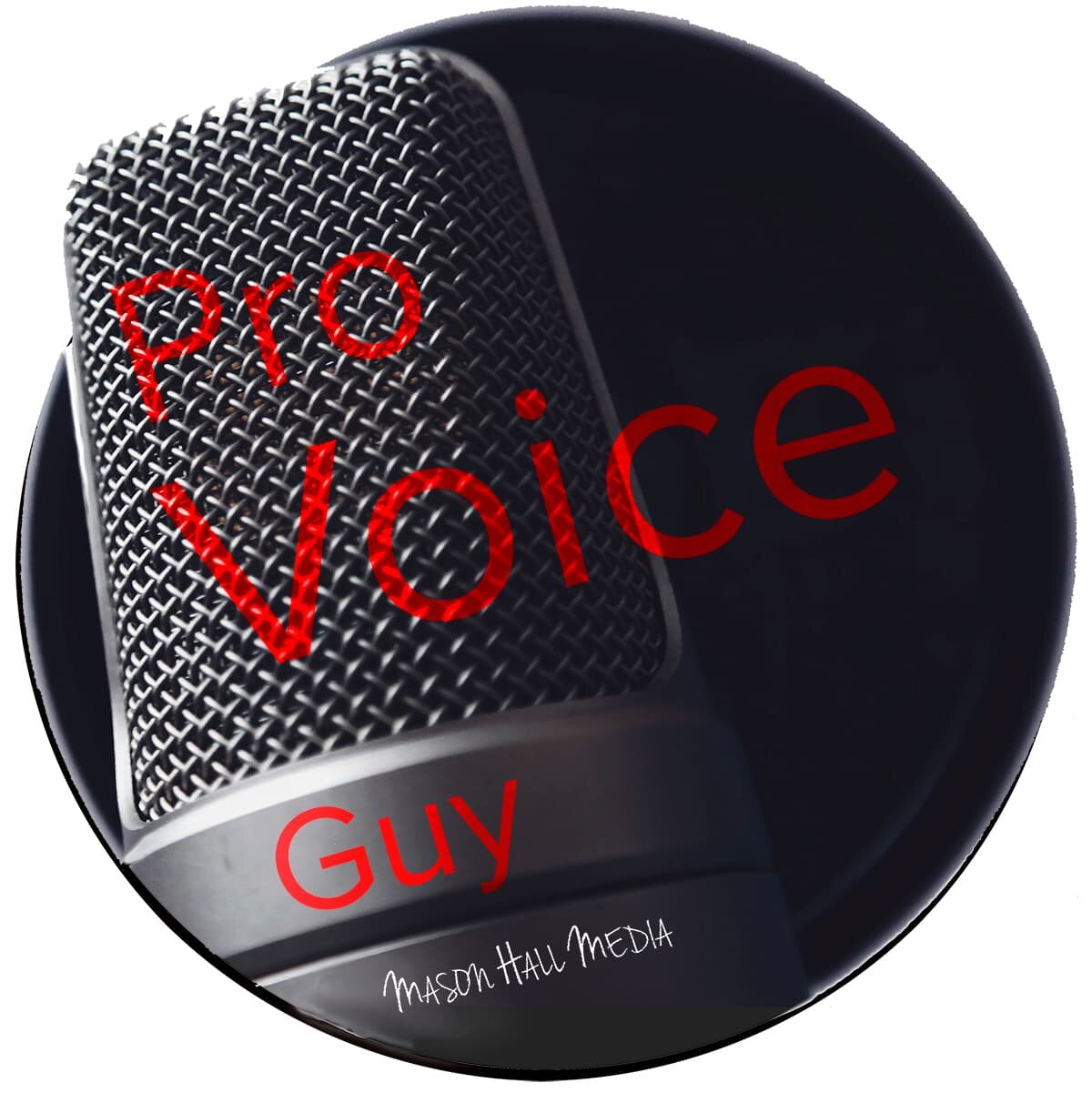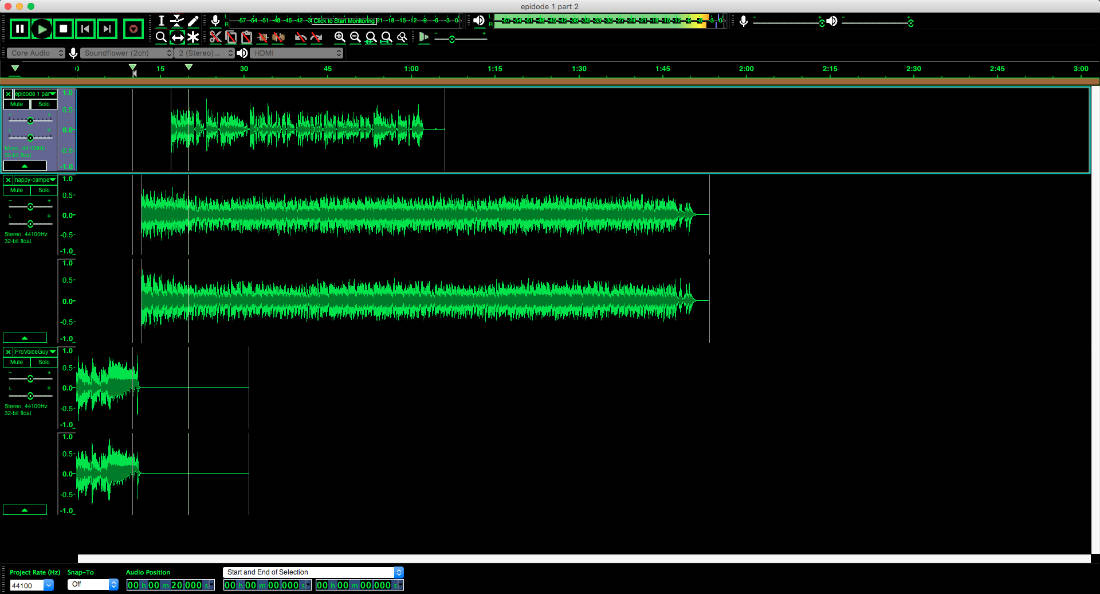Starting Your Own Podcast #2b: 4 Podcasting Software Options:
Recording and editing software is an essential element for starting your own podcast. Here are four options to make your podcasting workflow easier and your audio sound great.
Starting Your Own Podcast on Mac and PC
This post is part of a series on starting your own podcast. You are welcome to start at the beginning with Starting Your Own Podcast #1 The Microphone.
1. Adobe Audition
Price: $20.99/month or $239/year
Website: https://www.adobe.com/products/audition.html
Adobe Audition's price puts it out of reach for many podcasters just getting started. However, if you are ready to invest in a pro-level tool to improve your quality and workflow, Adobe Audition is a great choice.
I have been using this platform since it was called Cool Edit Pro back in the 90s. When I first loaded Cool Edit Pro on my studio workstation, I was blown away. It was the first truly intuitive digital audio workstation (DAW) and its graphical interface was like nothing I had never seen before. Suddenly the audio waves were big, bright, and clear and precision editing became remarkably faster.
Adobe eventually purchased Cool Edit Pro and turned it into Audition. They have added a ton of power and features but the basic graphical editing interface looks largely the same. What does that mean for you? It means that Adobe Audition is still very easy to learn, even for someone with little to no experience. But don't let ease of use fool you. As you learn and grow, the software is ready for you. Audition is used by audio pros and has features and tools to use as you grow in experience and knowledge.
2. Audacity
Price: Free
Website: https://www.audacityteam.org/
If you want a serious tool for creating podcasts but don't have the money to invest in a platform like Adobe Audition, Audacity is a pretty amazing option. The greatest feature of Audacity is that it is absolutely free. The software was developed by a group of volunteers and distributed under the GNU General Public License (GPL). It is open source, meaning anyone can access the code behind it and contribute to the improvement of the software. That means it keeps getting better.
At first look, Audacity's interface is not nearly as slick as Audition. However, let's remember, we are creating audio and no one on the other end is ever going to see what our software looks like.
In terms of podcasting, Audacity can do just about everything Audition can do. So, why would anyone pay $20 a month for Audition or $200 for Logic Pro X? Well, Adobe takes some of that money from all those subscriptions and pays programmers to continually improve Audition. That means those same things you can do in Audacity tend to be a little bit easier and more intuitive in Audition.
Here is the good news if you are just starting out or have a limited budget: First, no one is going to hear the difference in audio quality between the two programs. Two, even though Audacity is a little bit harder to get the hang of, it is not that difficult and there is a ton of help available on the web. Also, if you decide to upgrade later on, the things you learn in Audacity are easily transferred to Audition or Logic Pro.
One thing to note about Audacity. If you read my last post, you will see that part of the job of your software is encoding, or getting the file into the right format to upload to your podcast host. Audacity doesn't, by default, save to MP3, the format you will need. Doing so requires the installation of a library of files called LAME. Some people find this a little tricky and there are some ways around it. I have had good luck saving files as WAV and then converting them. You can convert them to MP3 using a free converter like Media Human. I have also seen a number of workflows where Mac users simply save as a WAV file, import that file into GarageBand and then save it as an MP3.
Starting Your Own Podcast on a Mac
3. GarageBand
Price: Free
Website: https://www.apple.com/mac/garageband/
If you work on a Mac and you want to get your podcast started fast, GarageBand is an amazing free piece of software from Apple that is likely already on your system. A number of podcast experts dismiss this software and I am not quite sure why. Sure, I really enjoy the more powerful and customizable features of Audition, Audacity, or Logic Pro. However, there is no reason someone can't create a high-quality podcast using GarageBand. In fact, if you are just getting started with podcasting, or audio production in general, the limitations of GarageBand might make your life a little easier.
4. Logic Pro X
Price: $199.99
Website: https://www.apple.com/logic-pro
Logic Pro X is to GarageBand what Final Cut Pro X is to iMovie. I would probably be a Logic user if it weren't for the fact that I cut my teeth on Cool Edit Pro which became Adobe Audition. There is another reason as well. I use Adobe Photoshop, Premiere, Lightroom, and Illustrator for other work and it makes sense to subscribe to the whole suite.
I am not going to write too much about Logic since it is the only one of these I am mentioning that I have little experience with. However, if you use GarageBand and are looking for more power and features, Logic Pro X is a great choice. Like both Audition and Audacity, it has far more features than you are likely ever to use on a podcast. But, it is nice to have a bit more flexibility than GarageBand has to offer.
I'll offer a suggestion if you are just getting started and happen to work on a Mac. Start with GarageBand. If it works for you but you begin to run up against its limitations, upgrade to Logic. Most of the things you will have learned in GarageBand will transfer over into the more powerful software.
So What To Choose When Starting Your Own Podcast?
Where you start will depend on your platform and budget. As I mentioned, I use Adobe Audition because I loved Cool Edit Pro and because I already subscribe to the Adobe Suite. However, I am pretty sure I could get by with GarageBand if I needed to and might have to upgrade to Logic Pro X. If I suddenly found myself without my Adobe Suite and working on a PC, I wouldn't hesitate at all to do all my work in Audacity.
The internet is full of a million opinions of what is best. But, in the end, you are going to need to find what works best for you. It doesn't cost anything but time to try out Audacity or GarageBand and Adobe will give you a 7 day free trial of Audition. Take some of them for a spin and find something what works for you.
In the meantime, check out my podcast here. It is all about starting your own podcast!
If you are looking for a professional intro for your podcast, I can help. Check out my professionally voiced and produced podcast intros starting at $10.
If you want to check out some of the equipment I used in my own studio or write about on this blog, you can read more here.




